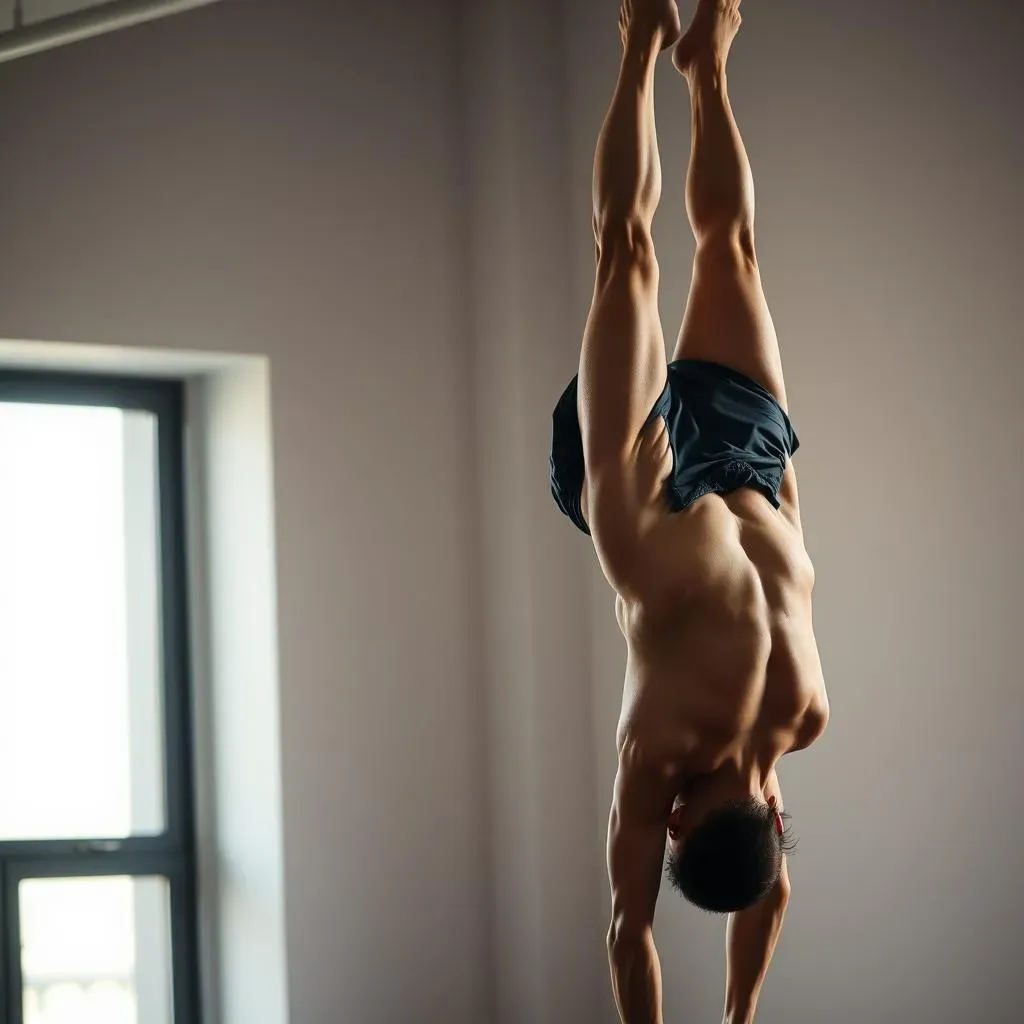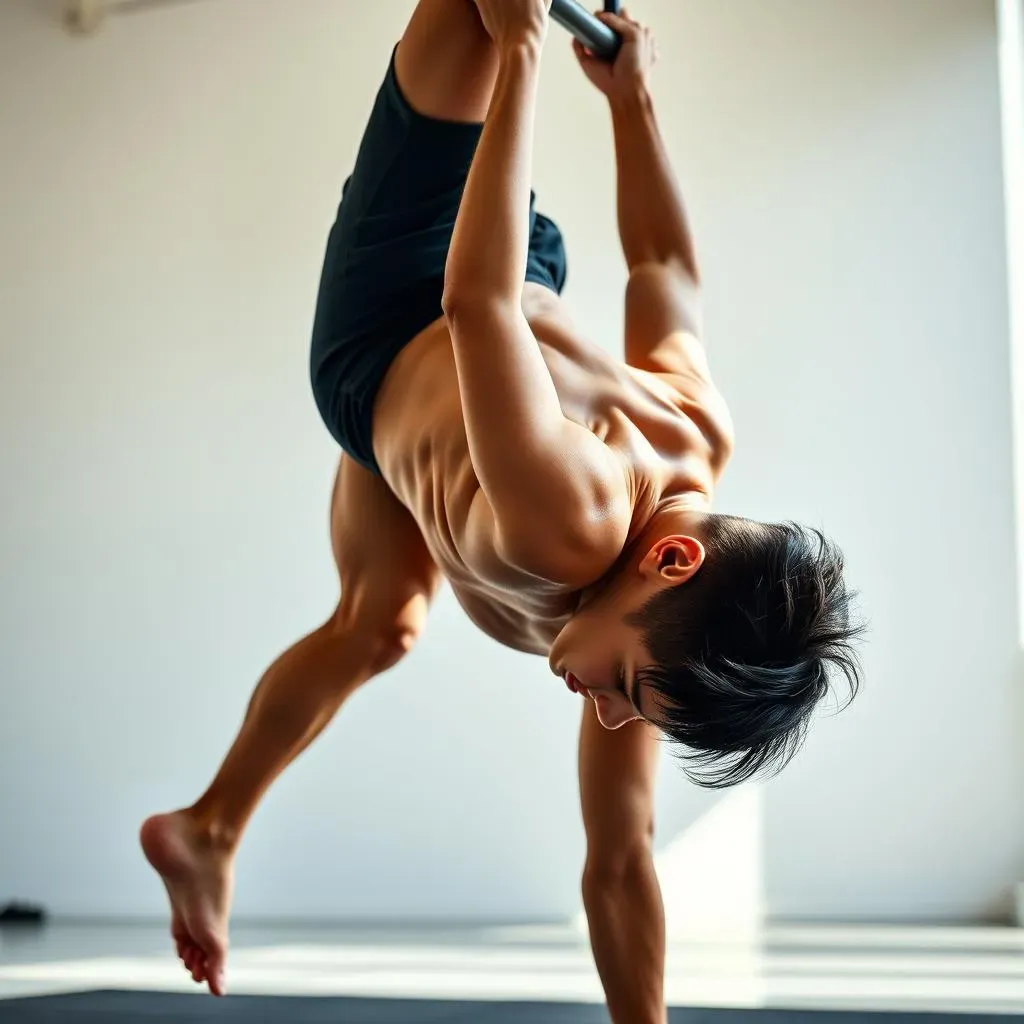Table of Contents
Are you ready to unlock your full potential and become a successful calisthenics athlete? Calisthenics is more than just a form of exercise; it's a journey that requires dedication, patience, and a willingness to push your body to new heights. If you're wondering how to be a calisthenics athlete, you're in the right place. In this comprehensive guide, we'll delve into the key aspects of calisthenics training, including aesthetics, bodyweight strength, and full-body control. Whether you're a beginner or an experienced athlete, this article will provide you with the necessary tools and knowledge to take your calisthenics journey to the next level. From building a strong foundation to mastering advanced techniques, we'll cover it all. So, let's get started and explore the world of calisthenics together.
Unlocking Calisthenics Strength: Building a Foundation

Unlocking Calisthenics Strength: Building a Foundation
Building a strong foundation is crucial for any calisthenics athlete. It's the starting point for all future progress and determines how far you can push your body. When it comes to unlocking calisthenics strength, there are several key factors to consider. First and foremost, you need to focus on developing your overall strength through compound exercises like push-ups, pull-ups, squats, and lunges. These exercises work multiple muscle groups at once, helping you build a solid base of strength.
Another important aspect is progressive overload. This means gradually increasing the difficulty of your workouts over time to continue challenging your muscles. For example, if you're doing push-ups, you can progress to diamond push-ups or decline push-ups once you've mastered the basic movement. Progressive overload is essential for building strength and avoiding plateaus.
Exercise | Beginner | Intermediate | Advanced |
|---|---|---|---|
Push-ups | Standard push-ups | Diamond push-ups | Decline push-ups |
Pull-ups | Assisted pull-ups | Standard pull-ups | L-sit pull-ups |
Consistency is also vital when it comes to calisthenics training. Aim to work out at least 3-4 times per week, with each session lasting around 30-45 minutes. It's also important to allow your muscles time to recover between workouts, so make sure to include rest days in your routine. Remember, recovery is just as important as the workout itself.
- Train 3-4 times per week
- Include 1-2 rest days
- Start with shorter sessions and increase duration as you build endurance
Finally, nutrition plays a significant role in building strength. Focus on consuming a balanced diet that includes plenty of protein, complex carbohydrates, and healthy fats. Aim to eat 1.2-1.6 grams of protein per kilogram of body weight daily to support muscle growth and repair. Adequate hydration is also essential, so drink plenty of water throughout the day.
Nutrition Tips for Calisthenics Athletes
Eat a balanced diet with plenty of protein, complex carbohydrates, and healthy fats
Aim to consume 1.2-1.6 grams of protein per kilogram of body weight daily
Stay hydrated by drinking plenty of water throughout the day
Mastering Body Control: Advanced Techniques for Calisthenics Athletes

Mastering Body Control: Advanced Techniques for Calisthenics Athletes
Developing Functional Strength
Mastering body control in calisthenics requires developing functional strength. This type of strength enables you to perform complex movements with precision and control. To achieve this, focus on exercises that work multiple muscle groups at once, such as the human flag, front lever, and back lever. These exercises require engagement of the core, arms, and legs, helping you build the strength and control needed for advanced calisthenics moves.
Another key aspect of functional strength is mobility and flexibility. Incorporate exercises like yoga or mobility drills into your routine to improve your range of motion and reduce the risk of injury. Remember, the more mobile your joints are, the better you'll be able to perform complex movements with control and precision.
Exercise | Description | Benefits |
|---|---|---|
Human Flag | Suspended hold with only hands and toes touching the ground | Builds core and lat strength |
Front Lever | Hold position with feet lifted off the ground | Develops core and arm strength |
Back Lever | Hold position with upper body lifted off the ground | Targets back and shoulder muscles |
- Incorporate mobility exercises 2-3 times a week
- Focus on exercises that target multiple muscle groups
- Start with shorter holds and progress to longer durations
Advanced Techniques for Body Control
Once you've developed a solid foundation of functional strength, it's time to move on to more advanced techniques. One of the most effective ways to improve body control is through isometric holds. Hold positions like the front lever or human flag for extended periods to build strength and endurance. You can also incorporate dynamic movements, such as slow and controlled transitions between different positions.
Another advanced technique is plyometrics. This involves explosive movements, such as jump squats or box jumps, to improve power and reactivity. Plyometrics can help you develop the strength and speed needed for complex calisthenics movements.
Technique | Description | Benefits |
|---|---|---|
Isometric Holds | Holding a position for an extended period | Builds strength and endurance |
Plyometrics | Explosive movements | Improves power and reactivity |
- Incorporate isometric holds 2-3 times a week
- Start with lower explosive movements and progress to more intense
- Focus on controlled transitions between positions
How to Achieve Aesthetic Physique through Calisthenics Training

How to Achieve Aesthetic Physique through Calisthenics Training
Building an Aesthetic Physique: Nutrition and Training
Achieving an aesthetic physique requires a combination of proper nutrition and targeted training. When it comes to nutrition, focus on consuming a balanced diet that includes plenty of protein, complex carbohydrates, and healthy fats. Protein is essential for building and repairing muscle tissue, so aim to consume 1.6-2.2 grams of protein per kilogram of body weight daily. Complex carbohydrates like brown rice, sweet potatoes, and whole grains provide sustained energy for your workouts, while healthy fats support hormone production and overall health.
In terms of training, focus on exercises that promote muscular balance and hypertrophy. Calisthenics exercises like push-ups, pull-ups, and squats are great for building strength, but they can also be modified to emphasize different muscle groups. For example, diamond push-ups target the triceps, while decline push-ups target the lower chest. Incorporate a variety of exercises into your routine to ensure overall muscle development.
Nutrient | Recommended Daily Intake | Food Sources |
|---|---|---|
Protein | 1.6-2.2 grams/kg body weight | Chicken, fish, eggs, beans, and lean beef |
Complex Carbohydrates | 2-3 grams/kg body weight | Brown rice, sweet potatoes, whole grains, and fruits |
Healthy Fats | 0.5-1 gram/kg body weight | Nuts, seeds, avocados, and olive oil |
- Eat 5-6 meals per day, spaced out every 2-3 hours
- Incorporate a source of protein with every meal
- Choose complex carbohydrates over simple sugars
Progressive Overload for Hypertrophy
Progressive overload is essential for building muscular hypertrophy. Gradually increase the difficulty of your workouts by adding more reps, sets, or weight. For example, if you're doing push-ups, try diamond push-ups or decline push-ups once you've mastered the standard version. You can also increase the number of reps or sets over time to continue challenging your muscles.
Another way to promote hypertrophy is through varied training. Incorporate different grip positions, such as neutral grip pull-ups or close grip push-ups, to target different muscle fibers. This will help create a more balanced physique and prevent plateaus.
Exercise | Variations | Muscle Targeted |
|---|---|---|
Push-ups | Diamond, decline, close grip | Chest, triceps, shoulders |
Pull-ups | Neutral grip, close grip, L-sit | Back, arms, shoulders |
Squats | Sumo, pistols, pause squats | Legs, glutes, core |
- Increase reps by 2-3 each week
- Add weight or resistance bands to your exercises
- Change your grip or stance to target different muscles
Full Body Control and Mobility: The Key to Calisthenics Mastery

Full Body Control and Mobility: The Key to Calisthenics Mastery
Developing Full Body Control through Functional Strength Training
Full body control is the holy grail of calisthenics. It's the ability to move your body with precision and control, performing complex movements with ease. To achieve this, you need to develop functional strength through exercises that work multiple muscle groups at once. Exercises like the human flag, front lever, and back lever are perfect for building functional strength. They require engagement of the core, arms, and legs, helping you build the strength and control needed for advanced calisthenics moves.
Functional strength training also improves mobility and flexibility. Incorporate exercises like yoga or mobility drills into your routine to improve your range of motion and reduce the risk of injury. Remember, the more mobile your joints are, the better you'll be able to perform complex movements with control and precision.
Exercise | Description | Benefits |
|---|---|---|
Human Flag | Suspended hold with only hands and toes touching the ground | Builds core and lat strength |
Front Lever | Hold position with feet lifted off the ground | Develops core and arm strength |
Back Lever | Hold position with upper body lifted off the ground | Targets back and shoulder muscles |
- Incorporate functional strength exercises 2-3 times a week
- Focus on exercises that target multiple muscle groups
- Start with shorter holds and progress to longer durations
Improving Mobility and Flexibility for Enhanced Body Control
Mobility and flexibility are essential for achieving full body control in calisthenics. Incorporate mobility exercises like yoga or mobility drills into your routine to improve your range of motion and reduce the risk of injury. Focus on mobilizing your shoulders, hips, and ankles, as these joints are critical for complex calisthenics movements.
Another key aspect of mobility is active isolated stretching. This involves contracting and then lengthening specific muscle groups to improve flexibility and range of motion. For example, when stretching your hamstrings, contract the muscle for a few seconds before lengthening it. This helps to increase flexibility and reduce muscle soreness.
Mobility Exercise | Frequency | Benefits |
|---|---|---|
Yoga | 2-3 times a week | Improves flexibility and balance |
Mobility Drills | 3-4 times a week | Enhances range of motion and reduces injury risk |
Active Isolated Stretching | After workouts | Increases flexibility and reduces muscle soreness |
- Incorporate mobility exercises into your daily routine
- Focus on mobilizing shoulders, hips, and ankles
- Use active isolated stretching to improve flexibility
Conclusion
Becoming a successful calisthenics athlete requires a holistic approach that encompasses physical training, mental toughness, and nutritional balance. By focusing on aesthetics, bodyweight strength, and full-body control, you'll be well on your way to achieving your calisthenics goals. Remember, consistency and patience are key, as mastering calisthenics skills takes time and dedication. Whether you're looking to improve your overall fitness or aspire to compete at a professional level, the journey to becoming a calisthenics athlete is rewarding and transformative. With the right mindset and training, you can unlock your full potential and join the ranks of elite calisthenics athletes. Start your journey today and discover how to be a calisthenics athlete.
